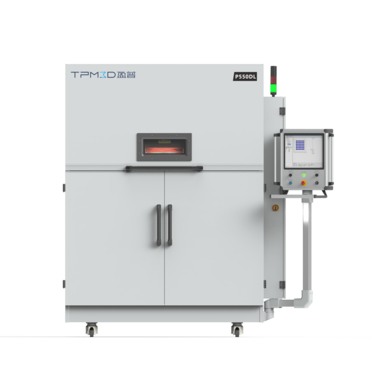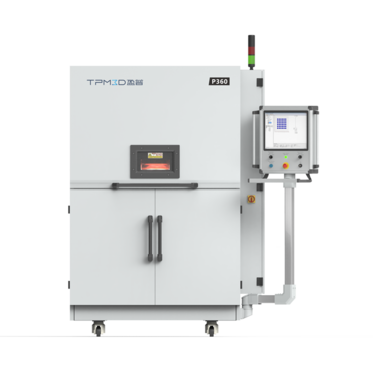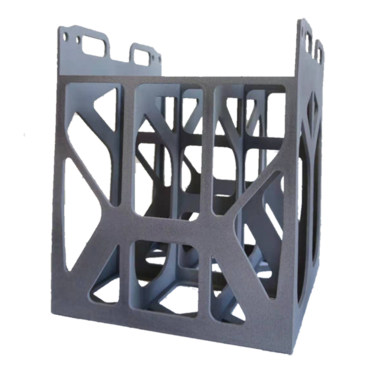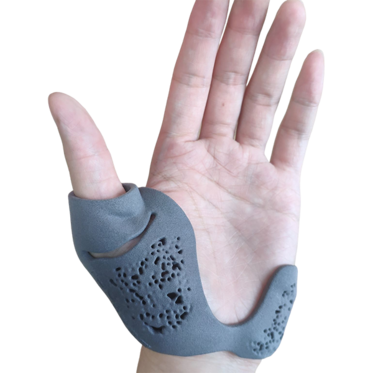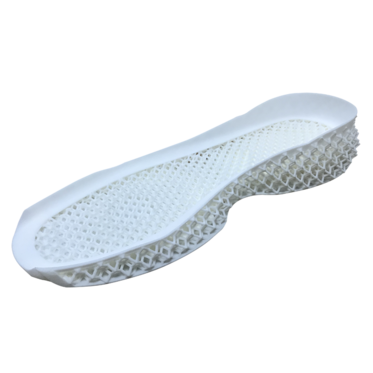How does SLS 3D printing work?
http://www.youtube.com/watch?v=W-VlDwJ8SZY
Can you use SLS 3D printing for rapid prototyping?
Of course, SLS 3D printing technology itself is one of the rapid prototyping technologies. Due to the wide range of molding materials, no additional support is required in the printing process, and the molded parts also have good comprehensive performance, and can be subjected to a variety of post-processing processes. Not only can it be used for R&D verification, but it is also becoming more and more widely used in end product applications, so it is very suitable for prototyping.
What are the characteristics of SLS 3D printing?
SLS 3D printing technology uses powder materials for sintering and molding, and the available raw materials are relatively rich, including metal-based powders, ceramic-based powders, film-based powders, and polymer-based powders. The material plays a decisive role in the accuracy and physical and mechanical properties of the molded part. The polymer-based powder is the earliest material used in the SLS printing process. Among them, the polymer material such as nylon (PA) has the advantages of low molding temperature and low laser power required for sintering. , It has good forming accuracy, excellent comprehensive performance of formed parts, and can do various post-processing processing. It is currently the most widely used and most successful SLS printing material.
What are the options for SLS post-processing?
Parts produced by SLS 3D printing have high precision and strength, and are often used as functional parts. Due to the nature of the powder fusion process, SLS printed parts have a powdery, granular surface. The post-processing of SLS parts has a series of techniques and common practices of surface treatment, such as: sanding and polishing, dyeing, painting, metal coating, gluing to waterproofing, chemical vapor smoothing, etc.
What are the advantages of SLS 3D printing?
SLS technology is generally formed by layer-by-layer sintering of polymer powder materials with CO2 laser. The commonly used materials include PA, PP, TPU, and glass fiber, carbon fiber, and aluminum powder reinforced nylon materials. In addition, the high-temperature model of TPM3D can also print PEEK. and other high-performance powder materials.
SLS technology has the following characteristics:
1. High forming efficiency. Compared with FDM technology and SLA technology, SLS technology does not need to add support structures during the printing process. Models can be stacked and printed in the forming cylinder, which effectively improves forming efficiency. Realize the direct production of small and medium batch products;
2. Good molding accuracy. SLS technology adopts laser scanning sintering molding. By adjusting the printing process parameters, the printing error of the model can be controlled within ±0.1-0.2mm;
3. Excellent performance of parts. Because SLS technology uses polymer plastics such as nylon, the printed parts usually have good mechanical properties, temperature resistance and chemical resistance. In addition to research and development testing purposes, they can also be directly used in final products. , to increase the value provided by SLS technology to customers; 4. Various processing can be done. After printing, the parts can also be polished, dyed, electroplated, tapped and other post-processing to further improve the performance and value of the model.
What are the disadvantages of SLA 3D printing?
SLA is a light-curing 3D printing technology, and printing usually takes a lot of time. During construction, steep slopes and overhangs require support structures. These parts can collapse during printing or curing. Since the resin is relatively fragile, it is not suitable for functional prototypes or mechanical testing, and the printing cost is high.
SLS best practices
SLS technology is generally formed by layer-by-layer sintering of polymer powder materials with CO2 lasers. The materials that can usually be used include PA, PP, TPU, and glass fiber, carbon fiber, and aluminum powder reinforced nylon materials. In addition, domestic head SLS 3D printing equipment manufacturers The high-temperature model of TPM3D can also print high-performance powder materials such as PEEK. SLS technology has the characteristics of high forming efficiency, good printing accuracy and excellent performance of parts.
At present, SLS technology has mature applications in various industries such as automobiles, aerospace, consumer electronics, medical care, education, cultural and creative industries, and prototypes. It can be widely used in product design and development, including dimensional testing, appearance testing, assembly testing, and functional testing. In addition, it can also be used to manufacture final products in small and medium batches. Taking the automotive industry as an example, it can print steering wheels, instrument panels, air conditioning systems, etc. for assembly testing, research and development verification, and can also print customized bumpers, side view Mirrors and other components can be directly loaded into the car for use, which can shorten the R&D test cycle of the new car and reduce the cost of CNC or mold making.
http://www.youtube.com/watch?v=W-VlDwJ8SZY
Can you use SLS 3D printing for rapid prototyping?
Of course, SLS 3D printing technology itself is one of the rapid prototyping technologies. Due to the wide range of molding materials, no additional support is required in the printing process, and the molded parts also have good comprehensive performance, and can be subjected to a variety of post-processing processes. Not only can it be used for R&D verification, but it is also becoming more and more widely used in end product applications, so it is very suitable for prototyping.
What are the characteristics of SLS 3D printing?
SLS 3D printing technology uses powder materials for sintering and molding, and the available raw materials are relatively rich, including metal-based powders, ceramic-based powders, film-based powders, and polymer-based powders. The material plays a decisive role in the accuracy and physical and mechanical properties of the molded part. The polymer-based powder is the earliest material used in the SLS printing process. Among them, the polymer material such as nylon (PA) has the advantages of low molding temperature and low laser power required for sintering. , It has good forming accuracy, excellent comprehensive performance of formed parts, and can do various post-processing processing. It is currently the most widely used and most successful SLS printing material.
What are the options for SLS post-processing?
Parts produced by SLS 3D printing have high precision and strength, and are often used as functional parts. Due to the nature of the powder fusion process, SLS printed parts have a powdery, granular surface. The post-processing of SLS parts has a series of techniques and common practices of surface treatment, such as: sanding and polishing, dyeing, painting, metal coating, gluing to waterproofing, chemical vapor smoothing, etc.
What are the advantages of SLS 3D printing?
SLS technology is generally formed by layer-by-layer sintering of polymer powder materials with CO2 laser. The commonly used materials include PA, PP, TPU, and glass fiber, carbon fiber, and aluminum powder reinforced nylon materials. In addition, the high-temperature model of TPM3D can also print PEEK. and other high-performance powder materials.
SLS technology has the following characteristics:
1. High forming efficiency. Compared with FDM technology and SLA technology, SLS technology does not need to add support structures during the printing process. Models can be stacked and printed in the forming cylinder, which effectively improves forming efficiency. Realize the direct production of small and medium batch products;
2. Good molding accuracy. SLS technology adopts laser scanning sintering molding. By adjusting the printing process parameters, the printing error of the model can be controlled within ±0.1-0.2mm;
3. Excellent performance of parts. Because SLS technology uses polymer plastics such as nylon, the printed parts usually have good mechanical properties, temperature resistance and chemical resistance. In addition to research and development testing purposes, they can also be directly used in final products. , to increase the value provided by SLS technology to customers; 4. Various processing can be done. After printing, the parts can also be polished, dyed, electroplated, tapped and other post-processing to further improve the performance and value of the model.
What are the disadvantages of SLA 3D printing?
SLA is a light-curing 3D printing technology, and printing usually takes a lot of time. During construction, steep slopes and overhangs require support structures. These parts can collapse during printing or curing. Since the resin is relatively fragile, it is not suitable for functional prototypes or mechanical testing, and the printing cost is high.
SLS best practices
SLS technology is generally formed by layer-by-layer sintering of polymer powder materials with CO2 lasers. The materials that can usually be used include PA, PP, TPU, and glass fiber, carbon fiber, and aluminum powder reinforced nylon materials. In addition, domestic head SLS 3D printing equipment manufacturers The high-temperature model of TPM3D can also print high-performance powder materials such as PEEK. SLS technology has the characteristics of high forming efficiency, good printing accuracy and excellent performance of parts.
At present, SLS technology has mature applications in various industries such as automobiles, aerospace, consumer electronics, medical care, education, cultural and creative industries, and prototypes. It can be widely used in product design and development, including dimensional testing, appearance testing, assembly testing, and functional testing. In addition, it can also be used to manufacture final products in small and medium batches. Taking the automotive industry as an example, it can print steering wheels, instrument panels, air conditioning systems, etc. for assembly testing, research and development verification, and can also print customized bumpers, side view Mirrors and other components can be directly loaded into the car for use, which can shorten the R&D test cycle of the new car and reduce the cost of CNC or mold making.


